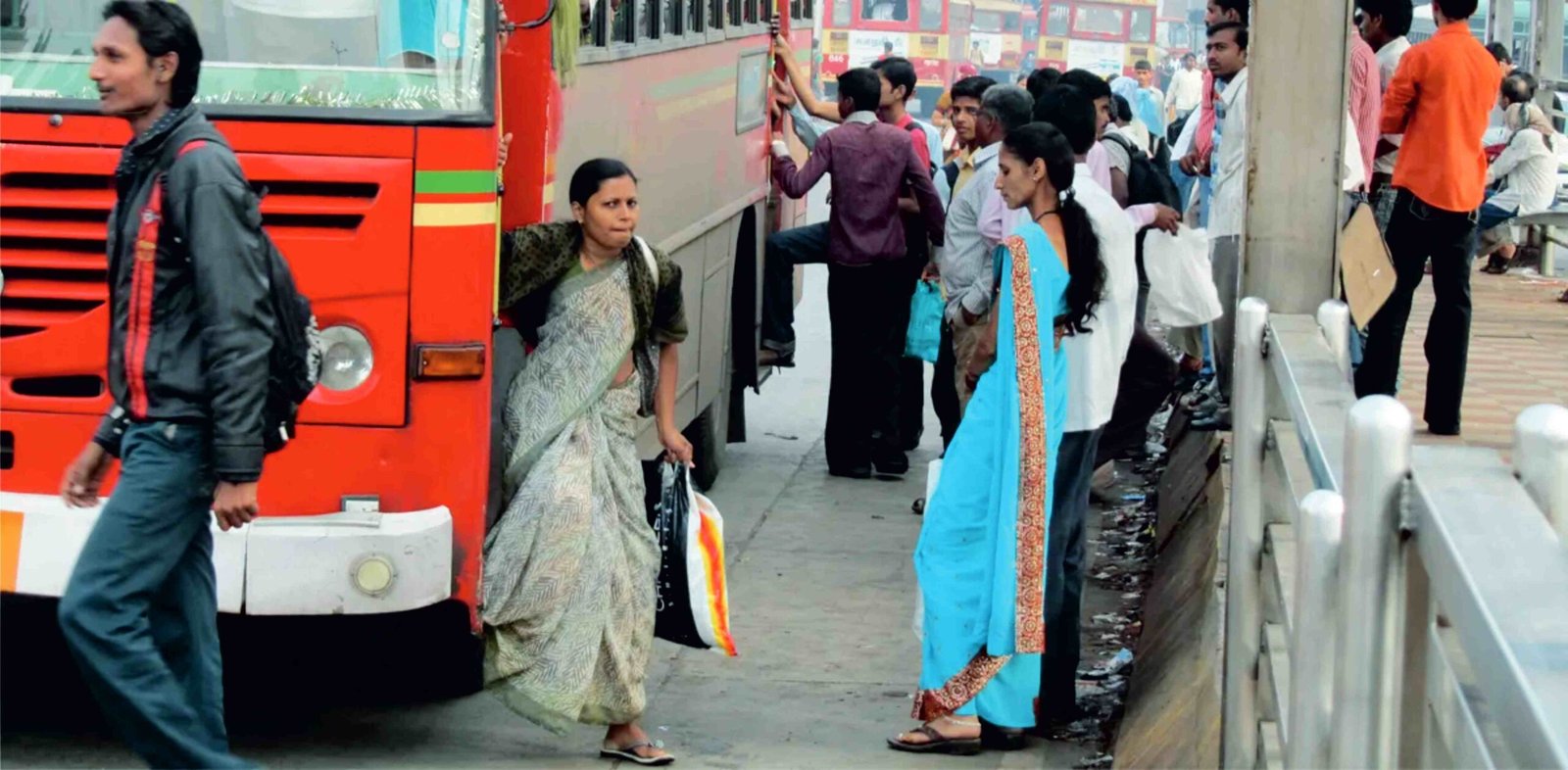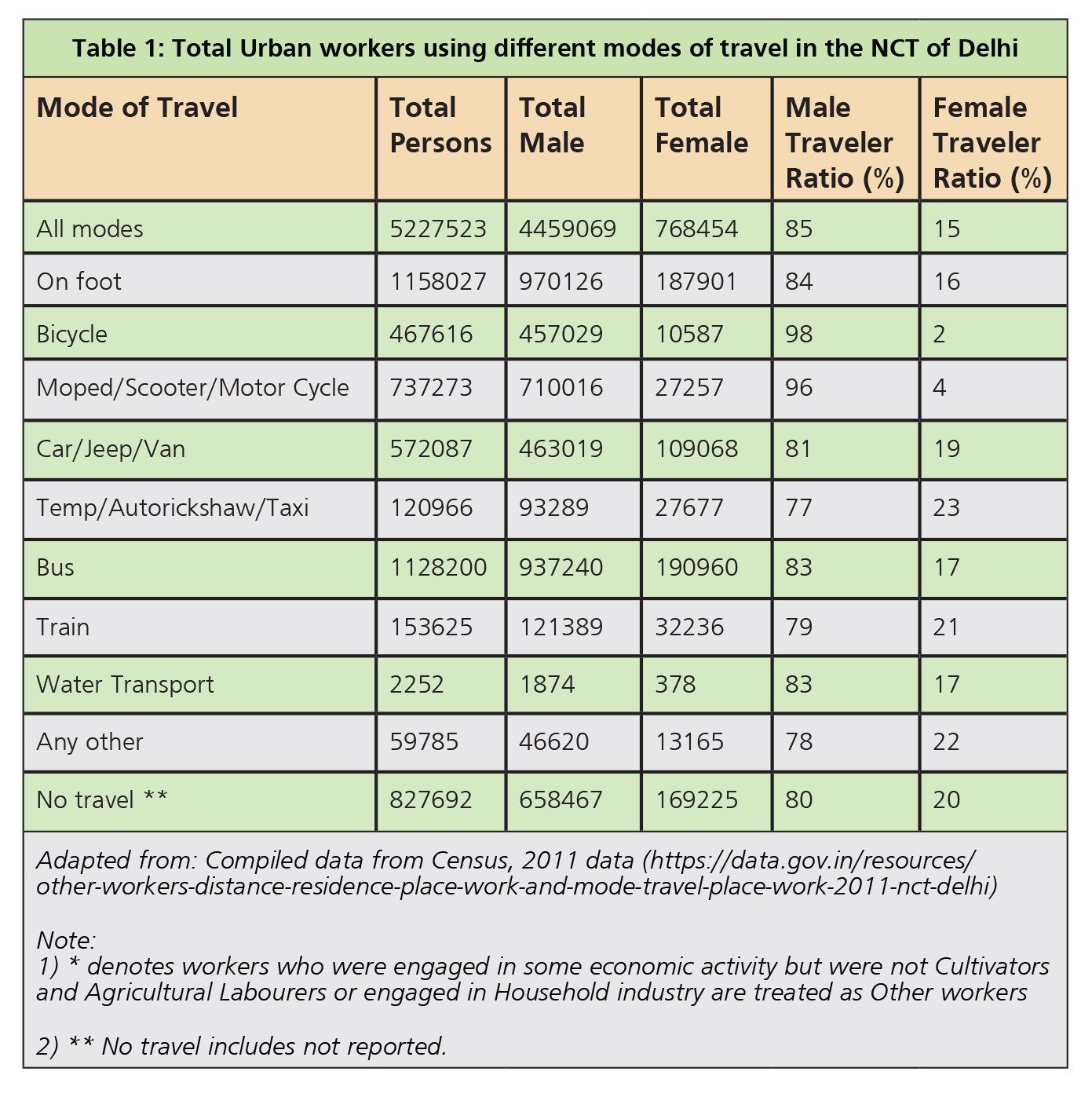
The safety of women in public transportation is a critical concern that impacts their mobility, economic participation, and overall quality of life. Public transport is often the most affordable and accessible option for women, yet it is fraught with challenges such as harassment, inadequate infrastructure, and a lack of secure options. Despite several government initiatives aimed at enhancing women’s safety, including helpline numbers and exclusive services like pink buses, the ground reality remains grim. Farhat Azad, Principal Scientist, Siksha Swaroopa Kar, Principal Scientist and Vinod Karar, Chief Scientist, CSIR-Central Road Research Institute, New Delhi summarizes the current scenario of women’s safety in public transport, examining data on commuting patterns, analyzing the existing infrastructure, and evaluating the effectiveness of initiatives.
- Farhat Azad
- Siksha Swarroop
- Vinod Karar
Delhi, often labeled as an unsafe city for women, epitomizes the challenges women face while commuting. A detailed analysis of commuter data highlights that only 15% of the total urban workers using public transport are women. Table 1 below provides insights into the distribution of travel modes among men and women in the National Capital Territory (NCT) of Delhi.
Achieving a safer public transport ecosystem will not only enhance women’s mobility but also contribute significantly to gender equality in urban spaces. Collaborative and sustained efforts can pave the way for safer roads and a more inclusive society.
National Crime Records Bureau data showed that there is > 40 per cent rise in crimes against women in 2021 as compared to 2020. Even after Nirbhaya case and many other similar horrific cases not much has changed on the ground. Delhi was and still is synonymous with being an unsafe city for women. Many rigorous and strict actions are being required with a holistic approach from ministries, organisations and NGO’s to lower down the crime against women specially on roads of India. Table 1 shows the total urban workers using different modes of travel in the NCT of Delhi.
From the above table, it is clear that of the total work trips made by women in Delhi, public, intermediate public and non-motorised modes of transport (taken together) are used commonly. This is because of various factors such as affordability, coverage, frequency, comfort etc. Moreover, use of Bicycle by females is very less, only 2% against Male Bicycle riders of 98%.
Fig. 1 shows the women’s stated preferences for daily commuting mode, disaggregated by individual monthly income. Further it proves that monthly income of females is also an important factor to use Public transport by females. This is because the harassment and eve-teasing is so common in public transport that females prefer to hire cab/auto or have their own vehicle rather than travelling in Public Transport.

The disparity in transport mode usage and the tendency to avoid public transport highlight the lack of safety and convenience for women. Social media and surveys repeatedly showcase incidents of harassment, further discouraging women from using public transit. While initiatives like pink buses, helpline numbers, and the Himmat App aim to improve safety, their limited reach and awareness reduce their effectiveness. A robust, inclusive approach is necessary to address these systemic issues and promote safer mobility options for women.

Infrastructure Gaps
A key factor contributing to the lack of safety for women in public transport is the inadequacy of infrastructure. Public transport systems in cities like Delhi often fail to provide essential amenities and safeguards that could enhance the security and comfort of female commuters. A survey of bus stops and transport facilities reveals significant gaps that deter women from using public transit. These include lack of basic amenities (as shown in the table), Low Frequency of Women-Centric Services and Poor Maintenance of Infrastructure (figure 2).

Government Initiatives and Observations
The government has introduced several initiatives aimed at enhancing security, accessibility, and awareness. While these measures have made incremental progress, their effectiveness is often hindered by limited reach, poor implementation, and lack of public awareness.
The Delhi government has established a robust emergency response system with Helpline No. 112 and the Himmat App. These services allow women to report emergencies. Helpline No. 112, a centralized emergency service is designed to provide immediate assistance. Reports indicate that the system works efficiently, often responding to calls within three minutes. This rapid response capability has proved to be a significant deterrent to crimes in areas where it is actively utilized. Himmat App enables women to send emergency alerts to the police, complete with real-time location tracking. Despite its potential, low public awareness and inconsistent internet connectivity limit its widespread use. The initiatives are technologically sound but lack outreach programs to ensure they are widely known and used by women.
The concept of pink buses, dedicated buses for female commuters was introduced to create a safe and comfortable travel option for women. This facility aims to address harassment by providing an exclusive space for women, free from male commuters. The availability of these buses remains scarce, with negligible frequency, particularly during peak hours. This inconsistency undermines their intended purpose and forces women to rely on regular buses.
Control rooms, such as the one at Maharana Pratap Inter-State Bus Terminal (ISBT), monitor real-time footage from CCTV cameras installed in some buses. These control rooms serve as a critical tool for detecting and addressing harassment or other crimes in public transport. However, the number of buses equipped with CCTV cameras is limited, and coverage does not extend to all routes or areas.

Way Forward
Women’s safety in public transportation demands a multi-stakeholder approach which includes robust infrastructure and expanding the fleet of pink buses and increasing their frequency, especially in sensitive areas like schools and women’s colleges, can also foster greater trust in public transport. Initiatives like widespread public awareness, better implementation of existing policies, introducing gender-sensitive transport policies & incentives, helplines and designated services can bring in change.
Most importantly a collaborative effort is called for involving the Government agencies, NGOs, and private stakeholders to create sustainable solutions. Partnerships with local communities can provide valuable insights and facilitate more impactful safety measures.
Proposed framework for safer and inclusive public transport for women is presented in Figure 3.

 TrafficInfraTech Magazine Linking People Places & Progress
TrafficInfraTech Magazine Linking People Places & Progress


